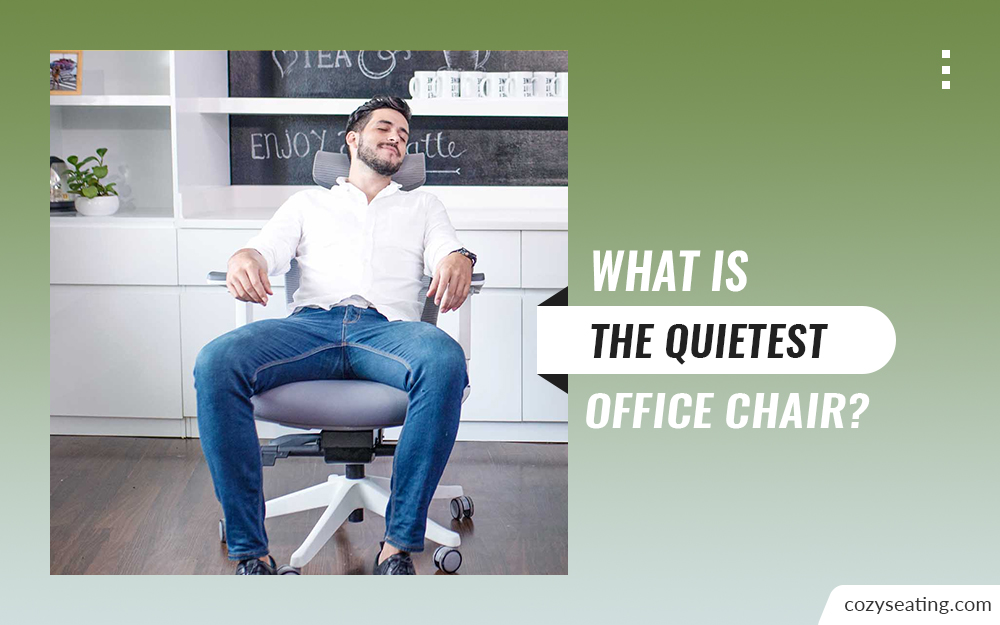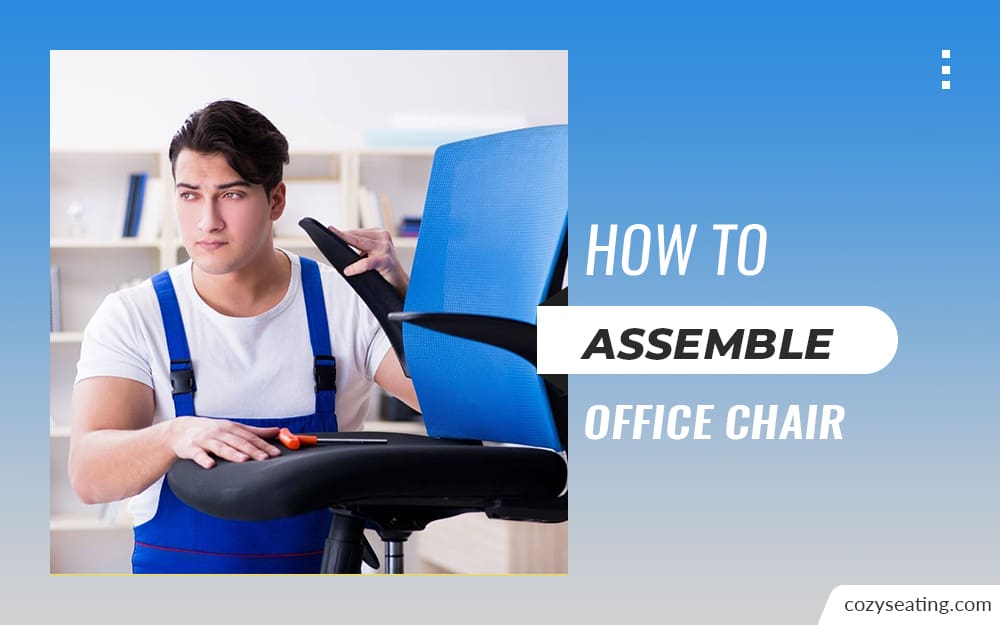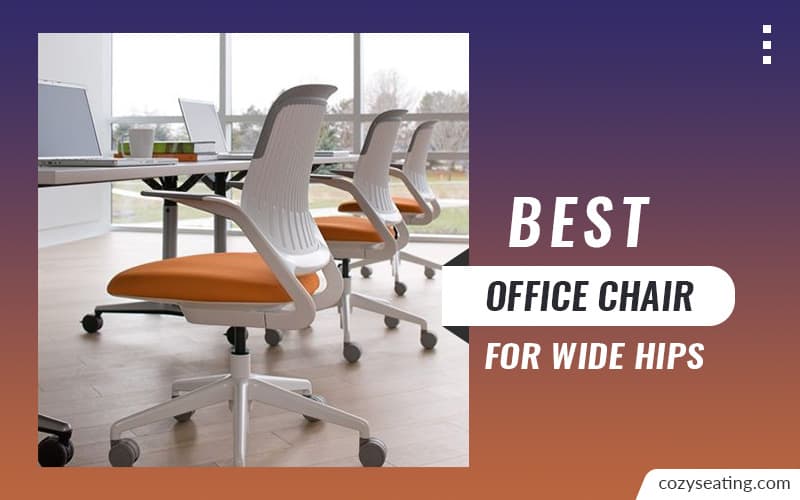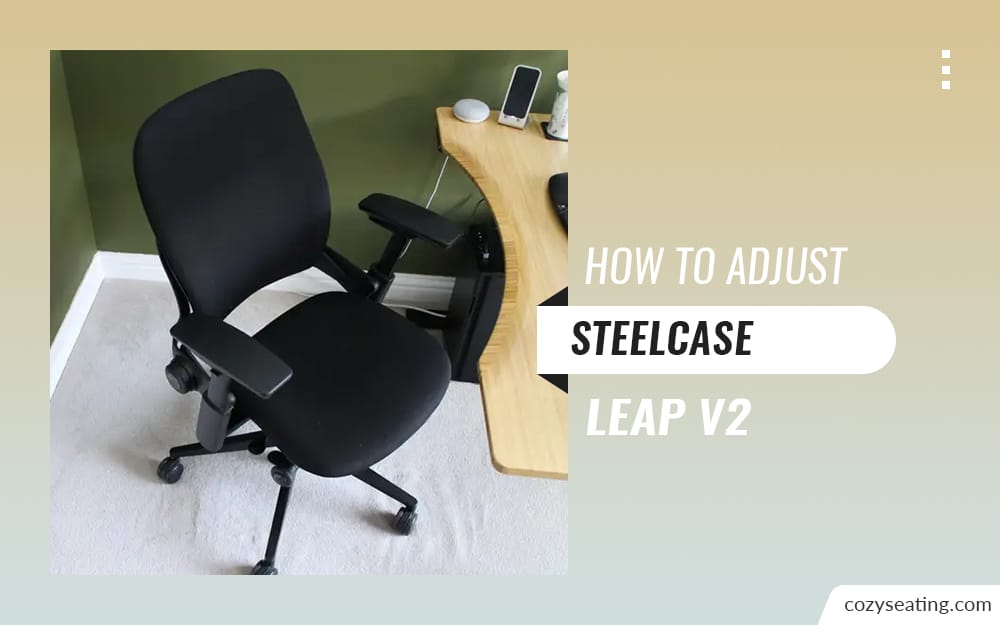
Disclosure: This site is reader-supported & contains affiliate links. We may earn a commission through products purchased using links on this page. Learn more

It may be surprising that your chair looks so new yet you can hardly reach your computer’s keyboard when sitting on it. Office chairs can sink any time the cylinder fails, whether you bought it a month ago or spent years on it.
Below, I help you determine how to fix a sinking office chair in four detailed, easy-to-understand ways.
Your office chair is sinking because of fluid leakage from the cylinder. Nevertheless, you can fix an office chair that won’t stay up by oiling using a PVC pipe or cylinder replacement. You can also fix a sinking office chair with a hose clamp by tightening it around the cylinder.
Table of Contents
Why Is My Office Chair Sinking?
Your office chair sinking doesn’t mean that you no longer have use for it. An office chair sinks when its cylinder loses its lift.
To better decipher how your chair sinks, you have to know how it operates. Office chair cylinders use two-fluid powers, pneumatic and hydraulic systems.
Hydraulic systems work using a liquid, while pneumatic systems operate using compressible gases like nitrogen.
Hydraulic systems can withstand heavier loads and are more prevalent in big machinery. Pneumatic systems are more common in office chairs as they don’t need to handle too much weight.
So, your chair is likely sinking because of its faulted pneumatic(gas) cylinder.
How a Pneumatic Cylinder Works
A pneumatic lift cylinder employs the principle of double-sided pistons and intensely pressurized gas that moves between the ends of the cylinder. There is a valve that secures the piston in position.
The double-sided piston gets attached to a support shaft that moves in an open-ended cylinder. Another tube houses the inner cylinder and contains a gas seal, valve, and pressurized nitrogen at approximately 2000 psi.
The valve at the cylinder’s top controls the gas flow between the top and bottom of the piston. The gas flows from the top to the bottom through the space between the outer tube and inner cylinder.
The piston’s top has a larger surface area than the rear end as the gas doesn’t act on the area taken by the support rod.
When the cylinder is not supporting weight, and the valve stays closed, gas pressure increases at the piston’s bottom rather than at its top.
When the valve opens, gas flows from the top to the bottom resulting in the piston moving downwards. This is why your chair rises when you get off it and pull the lever.
When you sit on your chair, the gas in the cylinder’s upper part gets compressed due to your weight, and its pressure is more than in the lower section.
When you open the valve, gas moves from the upper to the lower cylinder leading the piston to move upwards and your chair to lower.
The pressure of the gas in your chair’s cylinder is crucial. If this pressure is way below optimal standards, your office chair will fail to support your weight. In this case, gas will instantly drop to the bottom as you sit down, resulting in the sinking.
Hence, the sinking of your chair is due to inadequate gas pressure.
Related:
- How to Disassemble Office Chair – a Step by Step Guide
- How to Remove Hair from Office Chair Wheels – A Detailed Guide
- How to Remove Caster Wheels from Office Chair
Can You Fix Office Chairs That Won’t Stay Up?
Gas within your office chair’s cylinder can leak out via the outer valve seal at the top of the support shaft seals at the bottom.
If this happens, your chair will rapidly drop in height, and you won’t have a choice but to replace your cylinder.
However, if the chair holds your weight at first but then slowly begins sinking, you might be able to repair it. There are only two places the gas can leak to lead to a gradual drop in height:
- Valve inner seal
- Piston seal
In most cases, your chair gradually lowering its height is due to your seal lubricant getting rubbed away or drying out.
It is imperative to fix your sinking chair to get an excellent working posture.
How to Fix a Sinking Office Chair
The technique you use to fix a sinking chair depends on your budget, your level of expertise, the flexibility required, and the permanence of the fix.
Methods like hose clamp and PVC are cheap and don’t require too many skills while replacing the cylinder requires a professional.
How Do You Fix a Sinking Office Chair by Oiling?
Sit in your chair while paying attention to how it sinks. Do you notice friction through the lever as your chair’s height drops? If you do, all you need is to oil your chair.
Lubricate your chair’s joints using WD40. Apply your oil to all screws, nuts, and bolts underneath your office chair to smooth the joints. Spray the oil on the mechanism, then pat it dry.
You can also spray your WD40 on the cloth then smear the parts.
How Do You Fix a Sinking Office Chair Using PVC?
As seen, sinking is primarily due to inadequate pressure to keep your seat at the desired height. While replacing the cylinder tackles the issue, it is expensive. Placing a PVC pipe is more affordable and less challenging to do.
You need the following to conduct the PVC fix:
- PVC water pipe
- Measuring tape
- Screwdriver or wrench
- Rubber mallet
- Cutting tool
Here is how to stop office chair from sinking using PVC
- Position your seat upside down and remove the screws with your screwdriver.
- Gently hit the metallic part with your rubber mallet to separate your seat.
- Wear gloves and safety glasses, then begin cutting the PVC pipe with your cutting equipment. Ensure you measure the required length.
- Secure the pipe properly to avoid uneven edges.
- Measure your cylinder’s length, width, and circumference of the pipe. Ensure the pipe is the cylinder’s size or a little larger.
A trick when cutting the pipe is to begin from a single end using the cutting tool, say a hacksaw. Cutting eases the process of sliding your pipe onto the gas cylinder. On the other hand, you can detach your wheelbase then slide your pipe in without slicing it.
Push your pipe onto the cylinder while ensuring there are no gaps between the strut and the cylinder tubing. Your pipe shouldn’t fit too tightly or loose.
Sit in your office chair and assess whether it’s still sinking. You can cut or increase the pipe length to get a working height that best suits you.
How Do You Fix a Sinking Office Chair With a Hose Clamp?
To fix your sinking office chair with a hose clamp, you’ll need:
- A hose clamp
- Screwdriver
- Jubilee clip
- Duct tape
Begin by removing the plastic skirt to expose the gas cylinder.
The next step is adjusting your seat height to a comfortable level. This fix offers permanent results provided you take note of your preferred height as you can’t change it once done.
To easily determine your chair’s height, establish the distance from the ground to your knees when you are standing. This height is suitable for working without tiring your legs, even if you sit in the office for extended sessions.
To set your office chair to your preferred height, lay it on the side, then get it to your desired height.
You can also adjust your seat’s height via the cylinder. Turn the chair upside down and detach the skirt. Use the screwdriver to push your retaining clip to the chair base.
Insert back your wheels after setting the chair to the required height.
Use the jubilee clip to wrap your 20mm hose clamp around the gas cylinder. While positioning the hose clamp, loosen your screws as you slowly pull out the belt end.
Wrap your hose clamp around the gas cylinder but don’t fasten it at this point. Ensure there is a snug fit. Only tighten the hose clamp’s grip when you are sure it is stable.
Ensure you tighten the hose clamp adequately as you can as it will hold the entire weight of the chair’s occupants.
Rub off grime on the cylinder and wrap it in duct tape.
Replacing the Gas Cylinder
While you can replace your gas cylinder by following your manufacturer’s guidelines, it’s better to get professional assistance.
Replacing the gas cylinder is pretty straightforward. The challenge comes when removing it from your chair, as there are various ways gas cylinders get attached to office chairs.
You may end up destroying your chair or injuring yourself; hence getting an expert to replace the pneumatic cylinder is advisable.
Frequently Asked Questions
Can an Office Chair Explode?
As seen, most office chairs feature a pneumatic cylinder containing pressurized air.
As you repair the chair, never try anything that will puncture the cylinder as it may explode.
We have a detailed article on it, let’s go and read to know more about: Can Office Chairs Explode?
Can You Fix the Hydraulics on an Office Chair?
You can fix an office chair with a hydraulic cylinder by replacement.
It’s best to let a professional fix the hydraulic system for you.
Conclusion
A sunken office chair makes you work twice as hard to complete your assignment. Don’t forget the hand and backaches you are likely to experience.
Now that you understand how to fix a sinking office chair, try out the solutions above and forget about awkward sitting positions.
Recommended Reading

What Is The Quietest Office Chair?
Wondering how to quiet office chair? Do so by lubricating moving parts such as bearings, replacing work-out parts, and tightening loose screws, nuts, or bolts.

How to Assemble Office Chair With Step-by-Step Guide
Poor assembly of office chairs cause injuries or death in worse cases. So, I’ll guide you on how to assemble office chair today. Read now.

10 Best Office Chair for Wide Hips in 2022
If you have wide hips, you know how hard it can be to find a good office chair. We've reviewed the best office chair for wide hips and found the best options for you.

How to Adjust Steelcase Leap V2
Steelcase leap V2 has 6 components that allow its adjustment. Besides, some offer dual or triple alterations. Get to know how to adjust Steelcase Leap V2 here.
